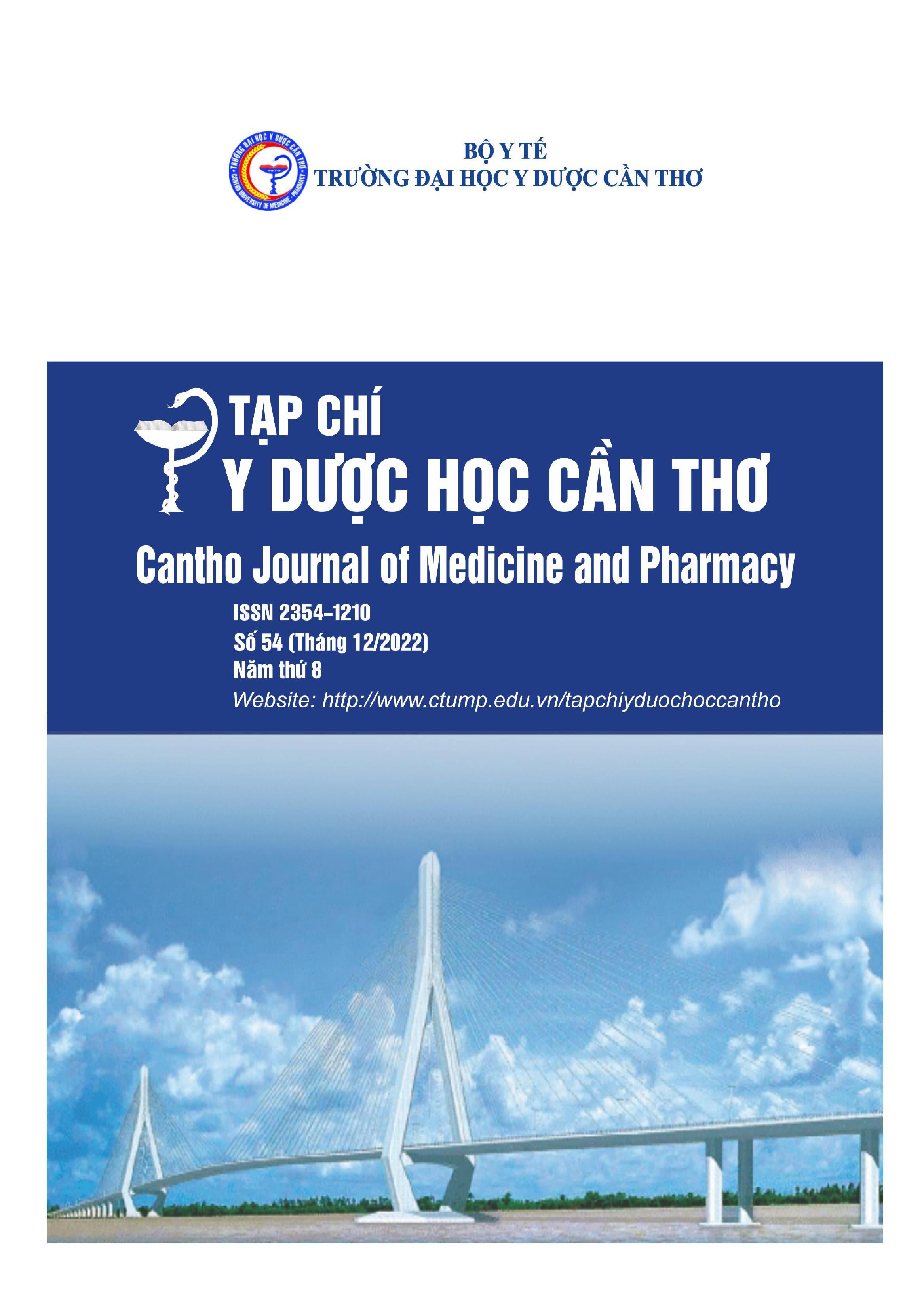STUDY ON CLINICALLY SIGNIFICANT DRUG INTERACTIONS AND RELATED FACTORS IN OUTPATIENT PRESCRIPTION AT CAN THO UNIVERSITY OF MEDICINE AND PHARMACY HOSPITAL IN 2021
Main Article Content
Abstract
Background: Drug-drug interactions are one of the common problems in clinical practice, which can have serious consequences and adversely affect treatment outcomes for patients. Evaluation of drug interactions based on consensus from many databases will help us be more certain about the possibility of drug interactions, thereby paying more attention to these interactions in clinical practice to ensure the rational use of drugs for the patient. Objectives: 1. Determining the rate and extent of clinically meaningful drug interactions in outpatient prescriptions at Can Tho University of Medicine and Pharmacy Hospital in 2021; 2. Exploring some related factors of drug interactions means clinical in outpatient prescription at Can Tho University of Medicine and Pharmacy Hospital in 2021. Materials and methods: Conducting a cross-sectional descriptive study of 612 outpatient prescriptions at the Department of Medical Examination of Can Tho University of Medicine and Pharmacy Hospital in 2021. Evaluation of drug interactions by 3 drug interaction lookup websites: Drugs.com, Medscape and IBM Micromedex. Results: Prescriptions containing 2-4 drugs have a clinically significant drug interaction rate of 28.4%, prescriptions with 5-7 drugs have a clinically significant drug interaction rate of 69.5% and prescriptions with over 8 drugs have a rate of 91.7%. Prescriptions from patients under 60 years of age have the rate of clinically significant drug interactions occurring 49.8%, prescriptions from patients aged 60 years have a rate of clinically significant drug interactions of 79.2%. There is a relationship between clinically significant drug interactions, the number of drugs used in the prescription and the age of the patient. Conclusions: There is a statistically significant relationship between the number of drugs on the patient's prescription and the age of the patient on the likelihood of a clinically significant drug interaction (p<0.001).
Article Details
Keywords
Drug interactions, clinically significance, outpatient prescriptions
References
2. Lâm Thụy Đan Châu (2020), Tình hình sử dụng thuốc và tương tác thuốc điều trị ngoại trú bảo hiểm y tế tại bệnh viện Trường Đại học Y Dược Cần Thơ năm 2019, Tạp chí Y Dược học Cần Thơ, (32), tr.156-162.
3. Hoàng Kim Huyền, J.R.B.J Brouwers (2014), Dược lâm sàng những nguyên lý cơ bản và sử dụng thuốc trong điều trị - Tập 1, NXB Y học, Hà Nội.
4. Trương Thiện Huỳnh (2020), Nghiên cứu tương tác thuốc có ý nghĩa lâm sàng và các yếu tố liên quan trong đơn thuốc điều trị ngoại trú tại một trung tâm y tế thành phố của tỉnh Hậu Giang năm 2019 - 2020, Tạp chí Y Dược học Cần Thơ, (32), tr.60-67.
5. Võ Thị Hồng Phượng (2018), Khảo sát tương tác thuốc trong đơn thuốc điều trị ngoại trú tại bệnh viện trường Đại học Y Dược Huế, Tạp chí Y Dược học trường ĐHYD Huế, 8(5), tr.26-36.
6. Nguyễn Ngọc Thủy Trân (2020), Tương tác thuốc trên bệnh nhân cao tuổi tại khoa Nội tổng hợp Bệnh viện Trường Đại học Y Dược Cần Thơ năm 2019, Tạp chí Y Dược học Cần Thơ, (32), tr.162-169.
7. Lu Yin, Pietsch M, Shen D et al (2015), A novel algorithm for analyzing drug-drug interactions from MEDLINE literature, Scientific reports, (5), pp.1-10.
8. Murtaza G., Azhar S., Khan M.Y.G., Khan S.A., Khan T.M. (2016), “Assessment of potential drug-drug interactions and its associated factors in the hospitalized cardiac patients”, Saudi Pharmceutical Journal. 24(2), pp.220-5.
9. The European Agency for the Evaluation of Medicinal products (1995), Note for guidance on the investigation of drug interactions.
10. Vik Kirsten K, Blix Hege S (2006), Polypharmacy as commonly defined is an indicator of limited value in the assessment of drug-related problems, British Journal of Clinical Pharmacology, pp.187-195.


